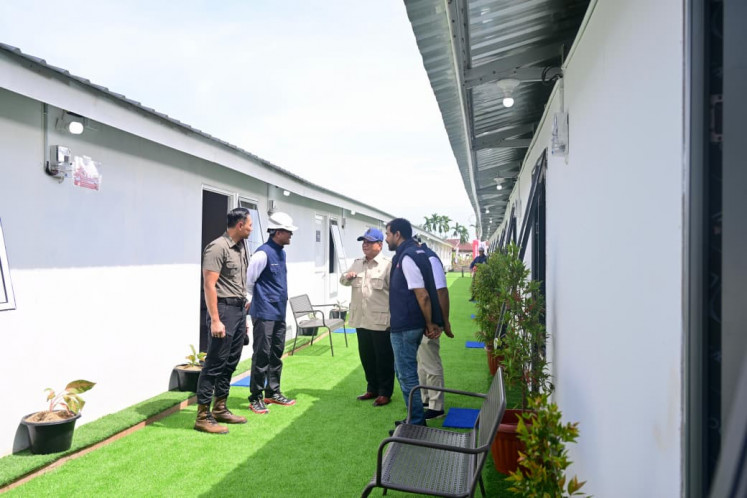Popular Reads
Top Results
Can't find what you're looking for?
View all search resultsPopular Reads
Top Results
Can't find what you're looking for?
View all search resultsNew manufacturing strategy
Indonesia should revive its manufacturing sector to generate growth above the 5 percent level, where the economy has stagnated in the past four years.
Change text size
Gift Premium Articles
to Anyone
T
he policy recommendations of the Asian Development Bank and the National Development Planning Ministry in their joint study on Indonesia’s manufacturing sector are rather bold and, in some cases, politically sensitive.
Yet, their strong suggestion that the government select high-value products for development in a bid to broaden the country’s manufacturing base and attract foreign investors, preferably large companies, to develop those products is quite strategic.
The central message of the joint report is that Indonesia should revive its manufacturing sector to generate growth above the 5 percent level, where the economy has stagnated in the past four years. Continuing to depend heavily on commodities with wildly volatile prices would subject the economy to the middle-income trap.
But developing more manufacturers to produce high-value goods for the international market requires a multisectoral approach: Manufacturing policies should be supported with adequate infrastructure to connect domestic production bases to global value chains, regulations and bureaucracy must be reformed to reduce logistics costs and barriers, appropriate fiscal and monetary incentives must be offered and an adequate supply of skilled workers must be ensured.
Since high-tech industries require big capital and the support of strong research and development departments, industrial development policies should be long term and much longer than the five-year political cycle. This means that industrial policy designs should clearly define the direction of the manufacturing sector for the next 15 to 20 years. Long-term policies with a clearly defined direction are also vital for encouraging foreign companies to transfer technology, product designs and engineering and development resources to local businesses within a specified time frame. However, the government should enforce its local-content rules consistently to encourage foreign companies to source materials from domestic suppliers.
However, since manufacturing development should focus on selected product segments in the country that are strong and have comparative advantages, these potential manufacturing champions should be selected according to clearly defined performance criteria and done transparently in close partnership with the private sector.
It might be inevitable that certain manufacturers of the selected product segments would receive special treatment, but this should not be a big issue — as long as they have a clear performance target, are selected through a transparent process and have operational ties with small and medium enterprises.
The government has already started implementing the report’s policy recommendation on developing special economic zones (SEZs) and industrial parks outside Java. In many emerging economies like Vietnam, well-designed SEZs and industrial parks have served as launch pads for entering the global market.
But the government must see to it that the businesses established in these SEZs and estates have shown strong performance and truly have a promising future and are not those simply seeking to enjoy the tax incentives.









